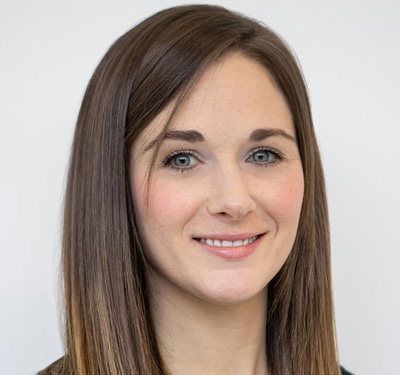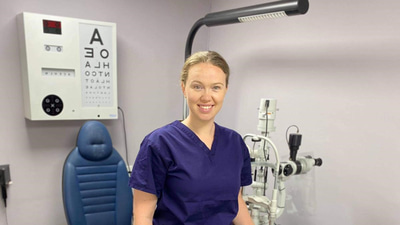- OT
- Professional support
- Optical organisations
- The contact lens journey
Practice team guide
The contact lens journey
From communication tips to staff training, experts share their insight on making contact lenses an integral part of optical practice

20 June 2021
The lifestyle changes prompted by the pandemic have been far-reaching. Suits were exchanged for tracksuit bottoms and slippers, while COVID-19 also had an impact on the nation’s patterns of wearing glasses and contact lenses.
As the UK enters the recovery phase of the pandemic, there is potential for another shift in vision correction habits as people return to the office and social events resume.
So how can practice team members make sure that patients have access to a full wardrobe of eye care solutions?

She shared that there has been an increased interest in wearing contact lenses as an alternative option alongside glasses to help with mask-associated dry eye or fogging.
“The pandemic has given us all an opportunity to reflect and make time for things that count, an attitude that may mean patients have been moved to action and to embark on their contact lens journey,” she emphasised.
Hiscox emphasised that while the optometrist or contact lens optician may do the contact lens fitting, all staff have a role to play.
“The whole practice team is crucial in supporting contact lens wearers on their journey,” she said.
This might involve conversations about how contact lenses can provide another useful and life-enhancing correction option during spectacle dispenses, or application and removal training and on-going patient support for existing wearers.
“Every member of the practice team is important in providing excellent patient experiences for all contact lens wearers, whether a new or established wearer,” Hiscox shared.
She noted that insights research has shown patients expect their eye care professional to start a conversation about contact lenses – and if this does not happen, they assume they are not suitable.
“Proactivity is key,” Hiscox emphasised.
It is often best to introduce contact lenses based on what the eye care professional knows about the patient, so that the recommendation is personal, she shared.
For example, if a patient is a keen runner, the eye care professional might ask, ‘How would it feel to be glasses free when running?’
The pandemic has given us all an opportunity to reflect and make time for things that count, an attitude that may mean patients have been moved to action and to embark on their contact lens journey
Hiscox explained that if the patient expresses any concerns about contact lenses active listening followed by knowledgeable and empathic responses can often relieve any anxiety.
Optometrist and past AOP Contact Lens Practitioner of the Year, Faye McDearmid, shared that all members of the practice team should have some training and knowledge around contact lens wear and care.
“The practice team is often the first contact point with our patients and build as much rapport with them as they do the clinician,” the Johnson & Johnson Vision professional affairs consultant shared.

She highlighted a series of considerations a practice team could consider when thinking about how to empower and upskill staff.
“How obvious is it to an outsider visiting your practice that you fit contact lenses? Do you know how confident each of your team are when it comes to recommending contact lenses, talking about different lens types – designs and materials and also explaining the costs and value of them? Can all of your practice team confidently conduct a successful contact lens wear and care with a new patient?” McDearmid noted.
Practices should assess how often training is provided on spectacle lens products, new frames and contact lenses.
McDearmid observed that following the pandemic she has noticed an increase in new contact lens wearers who had difficulties wearing spectacles with masks or were wary of touching their face to apply and remove their glasses.
“As restrictions ease our part-time wearers are resuming once more and we are continuing to see a heightened interest from new wearers,” she said.
Opportunities remain to evaluate how well patients’ current visual solutions are meeting their wants and needs, considering changes to their work, lifestyle and social interactions, McDearmid shared.
“As a myopic, sport-loving optometrist, contact lenses are my vision correction of choice and I like to ensure all my patients are given an appropriate personalised recommendation too,” she said.
In terms of communicating the benefits of contact lenses, like Hiscox, McDearmid believes that a personalised recommendation is important.
She added that the response to the generic question, ‘Have you ever thought about contact lenses?’ is often ‘No.’
“I like to get to know my patients and find out what their life is like. The better knowledge you have of someone’s day to day activities: work, lifestyle, family situation, sports and hobbies, the better placed you are to suggest personalised vision solutions,” McDearmid emphasised.
After making a tailored recommendation, McDearmid asks the patient for their thoughts on contact lens wear and listens to any concerns.
She reassures the patient that they will receive training on how to apply, remove and care for their contact lenses.
“It’s perfectly natural to be apprehensive about touching your eyes initially – until the point of lens wear we have spent our whole lives avoiding eye rubbing and touching our eyes,” McDearmid highlighted.
Specialty contact lens optician, Nick Howard, shared that he also avoids discussing contact lenses directly at first.
For example, an eye care professional might say, ‘Ever wondered what it would be like to spend the day without your glasses?’
“Simply approach the subject from a different angle, allowing patients to challenge and dismiss any of their own concerns,” he said.
Howard reinforced the importance of using positive terminology in all dialogue.
Contact lens resources
During the recovery phase of the pandemic, practices can let patients know they are open and available for routine care using marketing assets free to download on the Johnson & Johnson Vision website.
The AOP has a series of patient leaflets, including guidance on contact lenses, available for practices to download on its website.


Comments (0)
You must be logged in to join the discussion. Log in